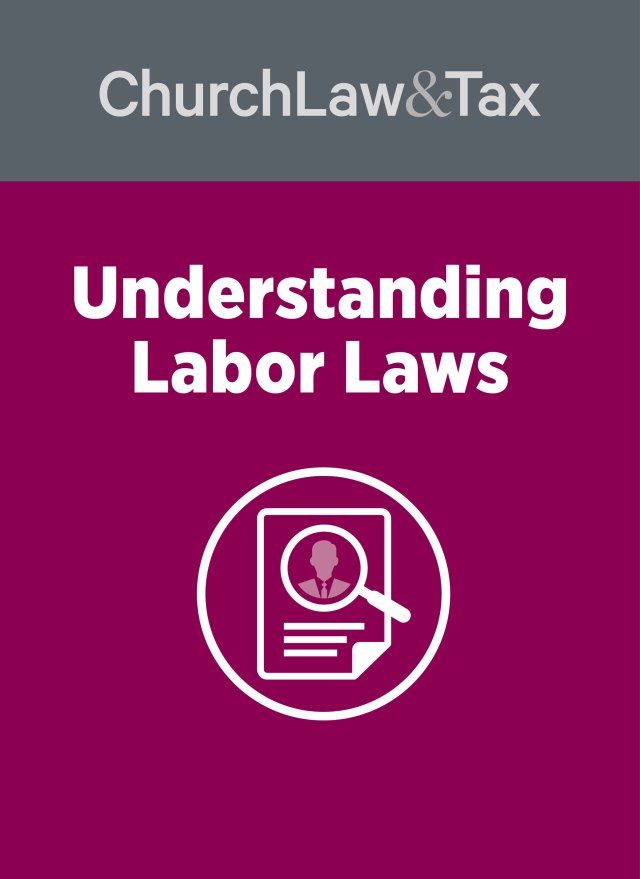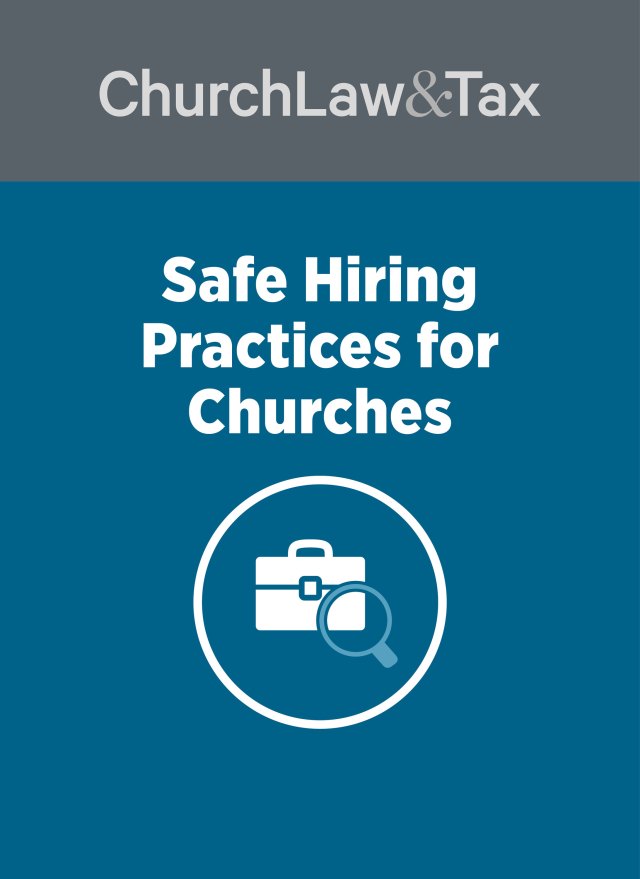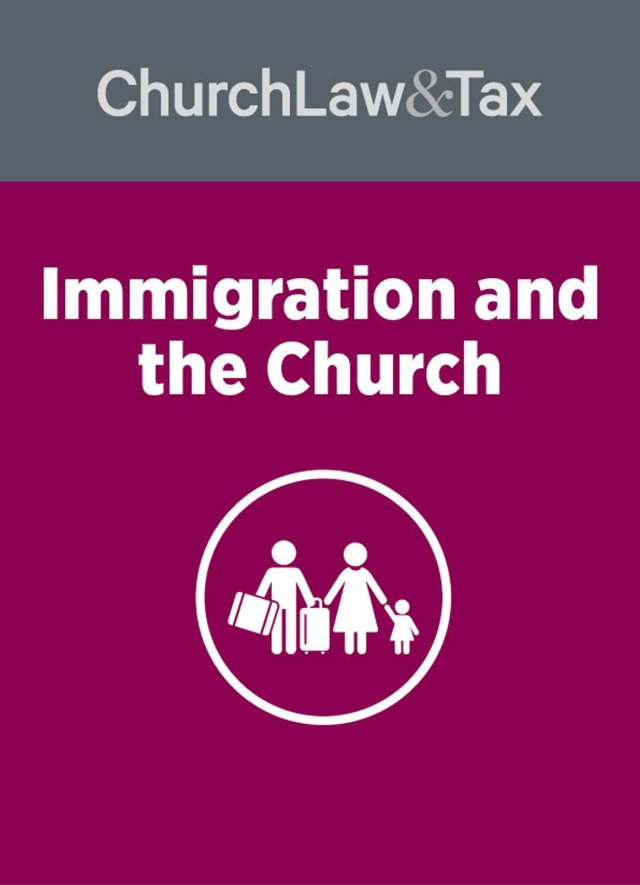Background. Churches are subject to new hire reporting requirements, mandated by Congress as part of comprehensive welfare reform legislation enacted a few years ago. This article will explain the application of the new reporting requirements to churches.
What is new hire reporting? New hire reporting is a procedure used by employers to report information about all new hires to a designated state agency. The purpose of the reporting requirement is to lower welfare costs by increasing child support collections and reducing welfare and food stamp payments. Another purpose is to reduce fraudulent unemployment benefits payments to persons who are working.
Key point. Technically, states are not required to mandate new hire reporting. But, if they fail to do so, they will forfeit federal funding under certain programs. To date, all states have enacted legislation mandating new hire reporting.
Why is new hire reporting necessary? New hire reporting facilitates the collection of child support from parents who change jobs frequently to avoid paying child support. It also will be used to detect and prevent erroneous welfare and unemployment benefits payments.
How will the information be used? When employers (including churches) report new hire information to their designated state agency, the agency will match the information against its own child support records to locate parents and enforce existing child support orders. Once these matches are done, the information is sent to the “National Directory of New Hires,” so other states can compare the information with their own child support records. The information also will be shared with state welfare and unemployment agencies, to detect and prevent fraudulent or erroneous payments.
Are churches exempt from the new hire reporting requirements? No, they are not. The new hire reporting requirements apply to all “employers.” The new law defines the term “employer” as “the person for whom an individual performs or performed any service, of whatever nature, as the employee of such person.” There is no exception for religious organizations. And, there is no exception for “small” employers having only one or two employees. But remember—reporting is only for new hires, as defined by state law. This generally will be any employee hired after a date specified by state law.
What are the penalties for not reporting? The federal welfare reform law prohibits states from assessing a penalty in excess of $25 for each failure to report a new hire. However, states may impose a penalty up to $500 if an employer and employee “conspire” to avoid the reporting requirements, or agree to submit a false report.
What information must be reported? The federal welfare reform legislation requires that employers include the following information in their new hire reports:
- employee’s name
- employee’s address
- employee’s social security number
- employer’s name
- employer’s address
- employer’s federal employer identification number (EIN)
Note that most of this information is contained on the W-4 form (“withholding allowance certificate”) completed by each new employee at the time of hire, and as a result most states allow employers to comply with the reporting requirements by sending a copy of each W-4 form completed by a newly hired employee.
Tip. The employer’s federal identification number is inserted on line 10 of Form W-4 only when the form is sent to the IRS. Since this happens infrequently, the employer’s identification number generally does not appear on the form. So, for an employer to use W-4 forms to comply with the new hire reporting requirements, it must manually insert its federal employer identification number (EIN) on line 10. The employer’s name and address also may need to be manually inserted on line 8.
Key point. Some states ask employers to voluntarily report additional information, such as date of hire, or medical insurance information.
What is the deadline for filing a new hire report? The deadline is specified by state law. However, it may not be later than 20 days after an employee is hired.
How do we make a new hire report? Most states allow employers to comply with the new hire reporting requirement in any one of three ways:
• Electronic or magnetic reporting. Some states permit employers to report by electronic file transfer (EFT); file transfer protocol (FTP); magnetic tape; or 3.5″ diskette.
• Fax or mail. Most states permit employers to fax or mail any one or more of the following:
(1) A copy of a new employee’s W-4. Be sure it is legible, and that the church’s federal employer identification number (EIN) is included on line 10. Also be sure that the church’s name and address are included on the form.
(2) A printed list.
(3) A new hire reporting form provided by your designated state agency.
Tip. If your church hires new employees infrequently, the easiest way to comply with the reporting obligation may be to use the state reporting form. Simply complete one form with your federal employer identification number, name, and address, and then make several copies. This way, you will only need to add an employee’s name, address, and social security number when a new employee is hired.
• Voice reporting. In some states, employers can report new hires by leaving a voice message on a special voice response system.
Tip. Be sure to check with your designated state agency to find out what reporting options are available in your state. Telephone numbers for all state agencies are included in a table in this newsletter. Use the option that is easiest for you.
Tip. Does your church use a payroll reporting service? If so, it may be automatically making the new hire reports for you. Check to be sure.
What about privacy concerns? Federal law requires each state to implement safeguards to protect the confidentiality of new hire reports. In addition, all data transmitted by states to the National Directory of new Hires is done over secure and dedicated lines.
Telephone Numbers of Designated State Agencies StateTelephoneStateTelephoneStateTelephone
| AL | 334-353-8491 | KY | 800-817-2262 | ND | 800-755-8530 |
| AK | 907-269-6685 | LA | 888-223-1461 | OH | 800-208-8887 |
| AZ | 602-252-4045 | ME | 207-287-2886 | OK | 800-317-3785 |
| AR | 501-682-3087 | MD | 888-634-4737 | OR | 503-986-6053 |
| CA | 916-657-0529 | MA | 617-577-7200 | PA | 888-724-4737 |
| CO | 303-297-2849 | MI | 800-524-9846 | RI | 888-870-6461 |
| CT | 860-424-5044 | MN | 800-672-4473 | SC | 800-768-5858 |
| DE | 302-369-2160 | MS | 800-866-4461 | SD | 888-827-6078 |
| DC | 888-689-6088 | MO | 800-859-7999 | TN | 888-715-2289 |
| FL | 904-922-9590 | MT | 888-866-0327 | TX | 888-839-4473 |
| GA | 888-541-0469 | NE | 888-256-0293 | UT | 801-526-4361 |
| HI | 808-586-8984 | NV | 888-639-7241 | VT | 802-241-2194 |
| ID | 800-627-3880 | NH | 888-803-4485 | VA | 800-979-9014 |
| IL | 800-327-4473 | NJ | 609-588-2355 | WA | 800-562-0479 |
| IN | 800-437-9136 | NM | 888-878-1607 | WV | 800-835-4683 |
| IA | 515-281-5331 | NY | 800-972-1233 | WI | 888-300-4473 |
| KS | 888-219-7801 | NC | 888-514-4568 | WY | 800-970-9258 |




